Namibia, a country in southwestern Africa, is renowned for its unique landscapes and biodiversity. The stark beauty of the Namib Desert, the hauntingly picturesque Skeleton Coast, and the lush waterways of the Caprivi Strip make it a haven for wildlife enthusiasts. In this blog, we will explore some of Namibia’s top wildlife sanctuaries, each offering a distinct and unforgettable experience for those seeking to connect with nature.
Table of Contents
Etosha National Park: The Crown Jewel
Etosha National Park is often the starting point for any discussion about wildlife in Namibia. Spanning an area of about 22,270 square kilometers, it is home to hundreds of species of mammals, birds, and reptiles, making it one of the most biodiverse regions in Africa. The park’s centerpiece is the Etosha Pan, a vast salt pan visible from space, which is dry and arid for much of the year. However, during the rainy season, it transforms into a shallow lake, attracting a plethora of wildlife including flamingos and pelicans.
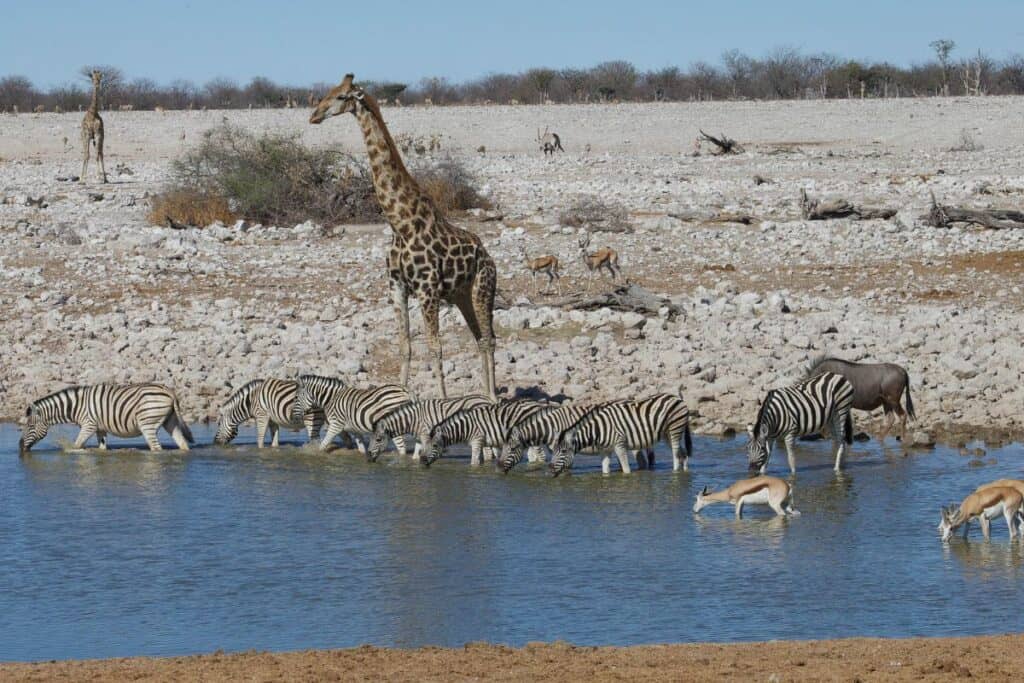
What makes Etosha unique is its accessibility to visitors. The park offers several strategically placed waterholes illuminated at night, providing unparalleled opportunities to observe the natural behavior of wildlife. From the majestic African elephants and the rare black rhinoceros to lions and a myriad of gazelle species, Etosha’s thriving ecosystem offers spectacular game viewing.
Skeleton Coast: The Wild Coastline
Stretching from the Kunene River in the north to the Ugab River in the south, the Skeleton Coast is often shrouded in fog, lending it a mystic atmosphere. Known for its harsh, rugged terrain and shipwrecks peppered along the coast, it is less frequented by casual tourists, making it a perfect sanctuary for those looking for a more solitary experience.
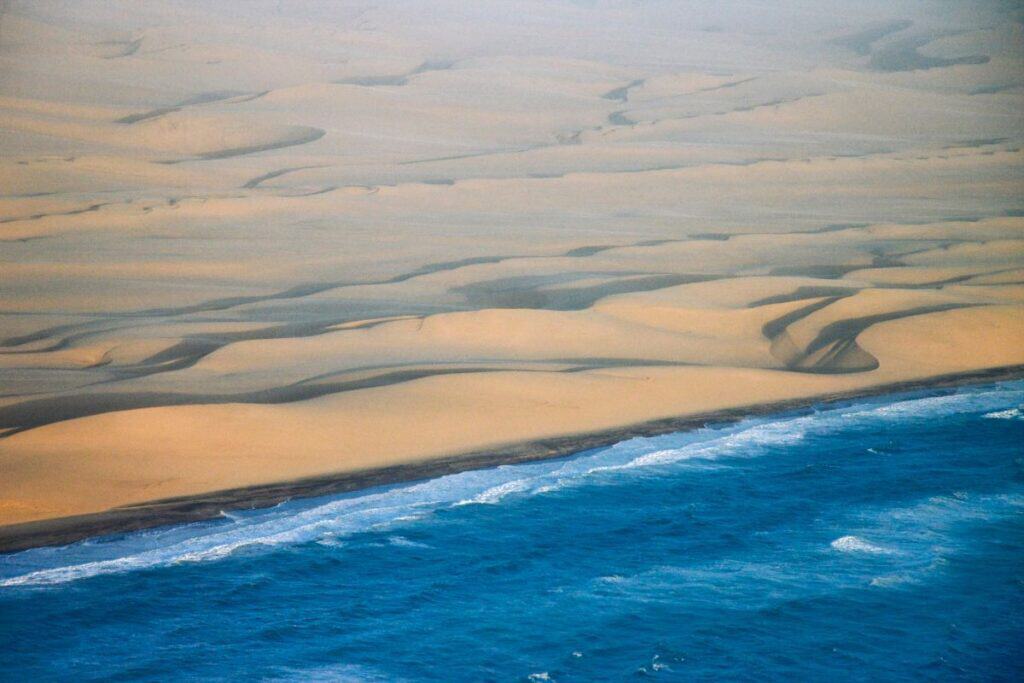
The wildlife here has adapted remarkably to the harsh conditions. Desert elephants, uniquely adapted lions, and the elusive brown hyena roam the inland areas, finding sustenance in a landscape that seems barren at first glance. Bird life is also prolific, especially where the ephemeral riverbeds provide moisture. The Skeleton Coast is a testament to the resilience of nature and offers a different perspective on wildlife conservation in extreme conditions.
Caprivi Strip: The Waterborne Wilderness
In stark contrast to the arid regions of most of Namibia, the Caprivi Strip is a narrow stretch of land loaded with rivers, wetlands, and lush vegetation. This region is a paradise for aquatic species and birdlife. The convergence of the Zambezi, Chobe, Kwando, and Linyanti rivers creates an environment that supports a high density of fauna, including hippos, crocodiles, and a diverse array of fish.
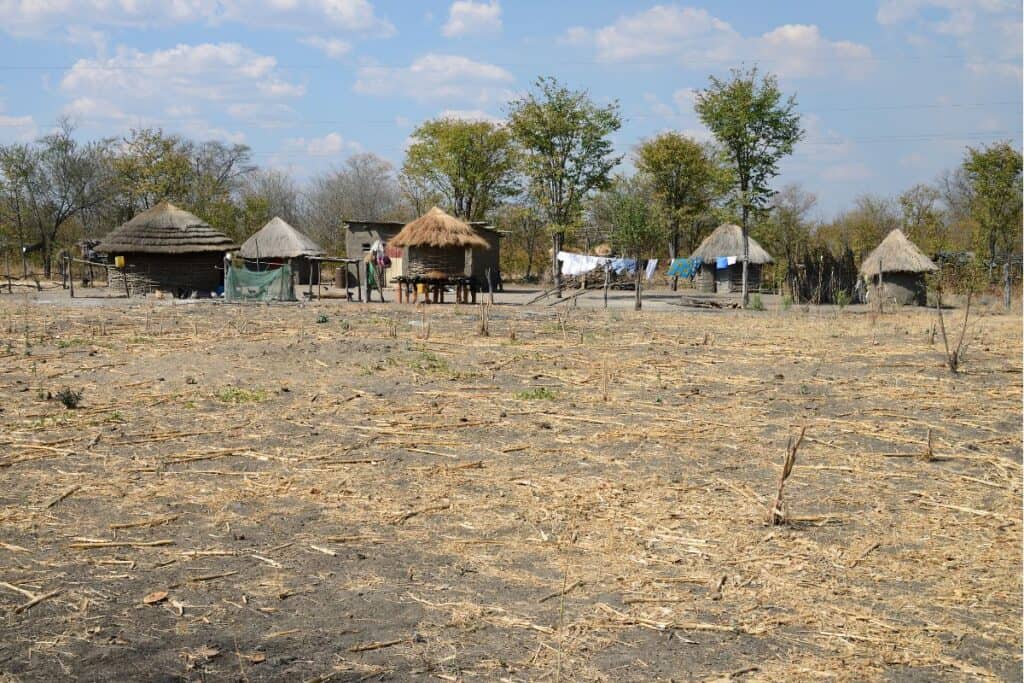
The Caprivi Strip is also crucial for the migration of elephants and other large mammals between Angola, Botswana, Zambia, and Zimbabwe. This makes it an important ecological corridor, offering a unique chance to witness the migratory patterns of these majestic creatures. Additionally, the birdwatching in Caprivi is world-class, with opportunities to spot rare and endemic species.
Namib Desert: The Ancient Sands
The Namib Desert, one of the oldest in the world, offers a dramatically different wildlife experience. Its vast dunes and ancient river valleys host species that have adapted over millennia to the extreme desert conditions. The iconic oryx with its long, straight horns is a symbol of endurance in this tough environment. Smaller creatures like the Namib desert beetle have ingenious ways of harvesting moisture from fog, demonstrating the incredible adaptability of life.
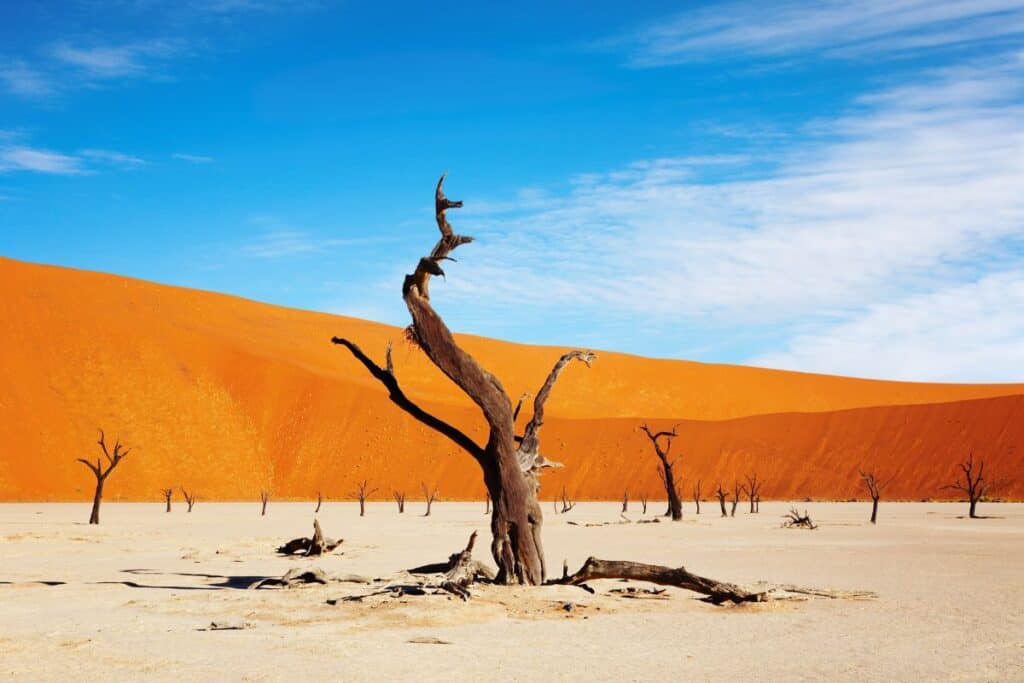
Visitors to the Namib Desert can explore the Sossusvlei area, known for its towering red sand dunes. The Deadvlei, with its stark white clay pan dotted with ancient, petrified acacia trees against red dunes and blue skies, provides breathtaking photographic opportunities.
Conservation Efforts and Community Involvement
Namibia is a leader in conservation, being the first African country to incorporate environmental protection into its constitution. The community-based natural resource management (CBNRM) program empowers local communities to manage wildlife through conservancies. This model has been successful in increasing wildlife populations and reducing poaching, benefiting both conservation efforts and community welfare.
Engaging with Local Communities: The Heart of Conservation
An integral part of visiting Namibia’s wildlife sanctuaries is understanding and engaging with the local communities. Namibia’s approach to wildlife tourism integrates community benefits and conservation, setting a benchmark for ecotourism. Many of the lodges and tourism businesses are either owned by or in partnership with local communities, which helps ensure that the benefits of tourism trickle down to those who live alongside these natural wonders.
For instance, in areas around the Caprivi Strip, community-owned lodges offer not only accommodation but also guided tours by locals who have intimate knowledge of the land and its wildlife. This direct involvement provides economic benefits to the community and offers tourists an enriched, authentic experience. Engaging with these communities allows visitors to learn about local cultures and conservation efforts, fostering a deeper appreciation and connection to the environment.
Adventure Tourism: Connecting with Nature
For the more adventurous souls, Namibia offers countless opportunities to immerse themselves fully in nature. Activities such as guided walking safaris, nocturnal wildlife tours, and even quad biking across the desert landscape allow visitors to experience the environment from a unique perspective. The thrill of tracking rhinos on foot in the bush or kayaking among hippos and crocodiles in the Caprivi’s rivers provides an adrenaline rush paired with educational insights into the challenges of wildlife conservation.
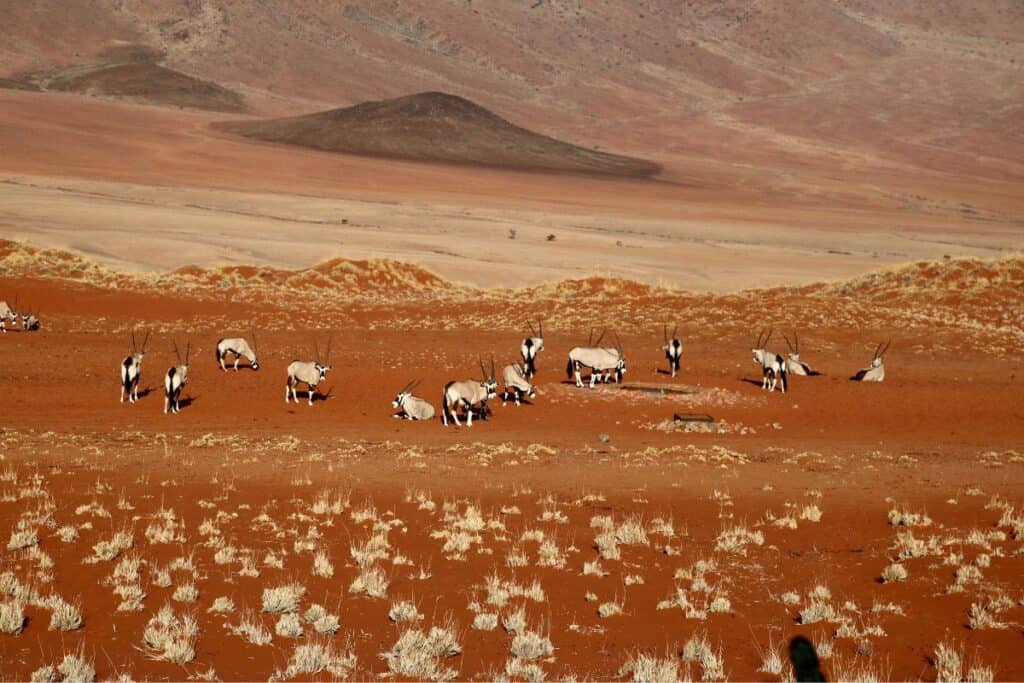
Moreover, the increasing popularity of photographic safaris in Namibia provides a non-invasive way to enjoy and document wildlife. Photographers from around the world come to capture the unmatched beauty of Namibia’s landscapes and its charismatic fauna. This form of tourism promotes a respectful and sustainable approach to wildlife viewing.
The Challenge of Conservation
While Namibia is a model for conservation success, it faces ongoing challenges including climate change, human-wildlife conflict, and illegal poaching. The delicate balance of supporting growing human populations while protecting wild areas is a continuous challenge. Sanctuaries like Etosha and the Namib Desert are constantly monitoring and adapting their management practices to mitigate these impacts.
Conservationists are working closely with local communities to develop sustainable solutions that benefit both people and wildlife. Initiatives such as fencing of critical areas, water conservation projects, and wildlife corridors are examples of strategies being employed to maintain and enhance the integrity of Namibia’s ecosystems.
Supporting Namibia’s Wildlife Sanctuaries
For those inspired by the beauty and biodiversity of Namibia, there are numerous ways to support conservation efforts. Visiting the sanctuaries, participating in ecotourism, and contributing to conservation organizations are direct methods. Additionally, spreading awareness about the importance of biodiversity and the challenges faced by conservation areas can help garner international support.
Looking to the Future
As Namibia continues to lead the way in integrating conservation with community development, its wildlife sanctuaries remain at the forefront of offering experiences that are not only breathtaking but also critical to our global environmental heritage. The future of these sanctuaries lies in the hands of those who visit, manage, and champion them, ensuring that they continue to inspire and awe future generations.
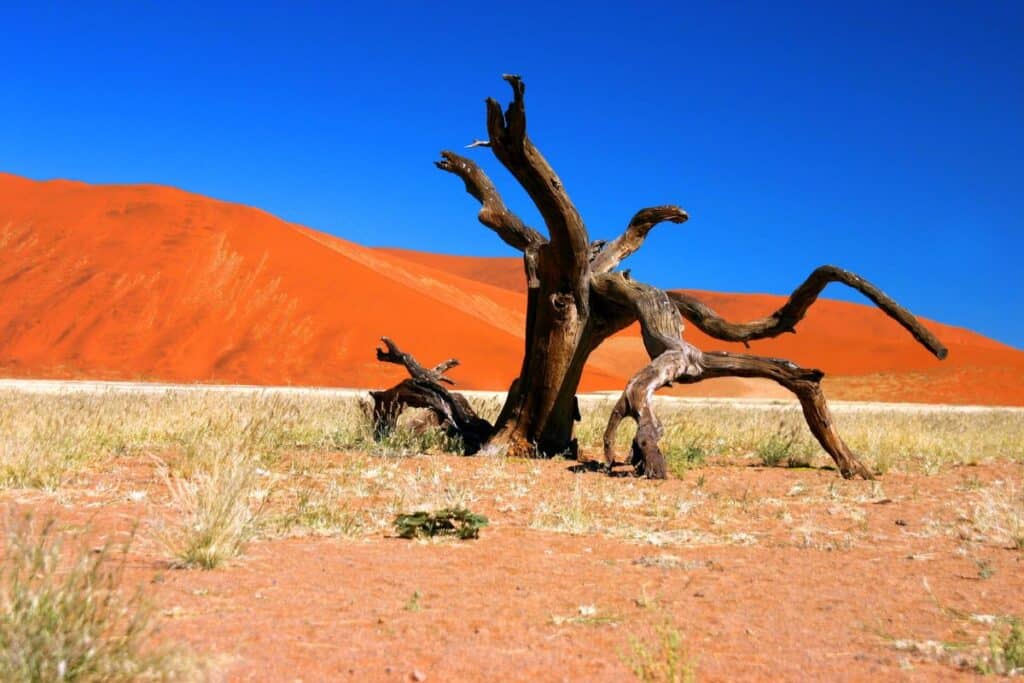
In conclusion, Namibia’s wildlife sanctuaries are not just places to visit but are pivotal elements in the broader landscape of conservation. They offer unique windows into the resilience and beauty of nature and highlight the critical need for continued and enhanced conservation efforts. For anyone seeking a profound connection with nature and a deeper understanding of the complexities of conservation, Namibia’s sanctuaries offer a compelling and enriching journey.
Read the Namibia article here.
